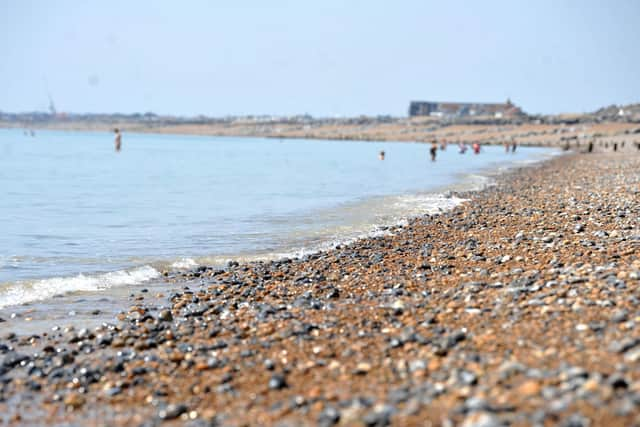Will Sussex be hit by 14-day heatwave amid 40 degrees claim?
and live on Freeview channel 276
According to reports in the national media meteorologists have warned that a 14-day heatwave will hit Britain in July, with temperatures soaring above 40 degrees Celsius.
The Weather Company – ‘the world's biggest commercial forecaster’ – has predicted that the country will see ‘sweltering temperatures’ early and late July, as well as two more in the first half of August and another in September.
Advertisement
Hide AdAdvertisement
Hide AdHowever, the Met Office has not confirmed such predictions at this stage.


In its forecast for the first two weeks of July in London and South East England, the Met Office said we can expect ‘generally unsettled weather’.
This is due to ‘dominant low pressure’ to the north-west of the UK, the weather experts said.
A spokesperson added: “This is likely to bring periods of rain and showers, most frequently to the north-west, but showers will also be possible throughout the UK, interspersed with drier, sunnier spells.
Advertisement
Hide AdAdvertisement
Hide Ad"The best of the dry conditions are likely to be in south-eastern areas, though these areas could still see some cloud and showers.
"Temperatures are expected to be around average for early July, potentially slightly lower in wetter areas, and a little warmer in the south, particularly in any brighter spells and later in the period.”
Predictability for the second half of July is ‘low’ – which is ‘typical for the time of year’, the Met Office said.
The spokesperson added: “There is a slight indication that high pressure may become dominant into the second half of the month, leading to fairer conditions, especially in the south.
Advertisement
Hide AdAdvertisement
Hide Ad"However, showers, at times heavy and thundery, are likely to remain a risk throughout the country. The chances of above-average temperatures redeveloping are slightly higher than normal; the chance of heatwave conditions developing is thus also slightly higher than normal, although the occurrence of heatwaves is not unusual for July.”
This comes after the news that June is ‘on track’ to be the hottest on record, in a series which goes back to 1884.
The Met Office said: “While the forecast for the next few days shows an unsettled picture with temperatures closer to average, this won’t be enough to prevent June 2023 being provisionally the UK’s hottest June on record, beating the previous record set in 1940, as well as June 1976 (part of the well-known summer of 1976), which is currently the second warmest June on record.”
The highest temperature recorded so far this month is 32.2 degrees Celsius.
Advertisement
Hide AdAdvertisement
Hide AdThe Met Office’s Mike Kendon said: “What has been particularly unusual is the persistent warmth for much of the month, with temperatures reaching 25C widely for at least a fortnight, and at times 28 to 30C – whereas we would more typically expect maximum temperatures in the high teens or low 20s at this time of year.
"While the UK has always had periods of warm weather, what climate change does is increase the frequency and intensity of these warm weather events, increasing the likelihood of high temperature records being broken, like we saw for 2022’s annual temperature for the UK.
“It is particularly telling that of the 12 months of the year, for UK average maximum temperature the records for the warmest months include 2019 (February), 2018 (May), 2015 (December), 2012 (March), 2011 (April), 2011 (November), 2006 (July) and now 2023 (June). Statistics such as this clearly tell us of the changing nature of the UK’s climate and how it is particularly affecting extremes.”
Have you read?: Fish found dead at Worthing’s Brooklands Park